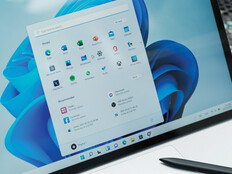How a Windows Update Can Spark New IoT Services on Campuses
Microsoft announced a new update to its Windows 10 OS in October that will open doors to a new level of connectedness on college campuses.
Integration of the Internet of Things has become a common goal for higher education institutions as universities strive for a connected campus model.
While many colleges are focusing heavily on IoT as part of their digital transformation initiatives, administrators and IT leaders are facing certain hurdles, particularly concerning data quality and management, which has slowed down campus innovation.
"Data management is the biggest obstacle we have right now," Gerry Hamilton, director of facilities energy management at Stanford University tells Campus Technology. "It all comes down to scalability and sustainability. We have found there is an exponential growth of effort that happens every time you deploy one more system."
The new update promises to bring “edge intelligence with machine learning, industrial strength security” and “diverse silicon options” to users.
MORE FROM EDTECH: Check out how universities are preparing their networks for IoT integration!
Machine Learning Improves IoT Management
To help users get a firm grasp on their IoT data management, the new Windows 10 update will employ Microsoft Azure IoT Edge and Windows machine learning.
“Windows 10 IoT enables you to do more at the edge including machine learning, event processing, image recognition and other high-value artificial intelligence without developing it in-house,” according to Microsoft’s announcement. “Seamless integration with Azure IoT Edge brings cloud intelligence and analytics securely to Windows 10 IoT devices at scale.”
Azure’s IoT Edge service will allow campus IT teams to run AI workloads and Azure services on Windows 10 IoT devices locally and remotely, easing the burden on campuses to create a web of connected devices.
At the University of Nebraska–Lincoln, campus staff members are looking into using Azure IoT Edge to help manage sensors that detect facility issues on campus, EdTech reports.
“Cloud-based machine learning applications in Microsoft Azure and similar technologies may help systems learn how to reduce the time needed to identify HVAC faults,” says Lalit Agarwal, the university’s director of utility and energy management. “That is definitely an area for us to investigate for the future.”
In addition, the integration of Azure IoT Device Management and Microsoft Intune simplifies device monitoring, allowing campus IT teams to develop management solutions and consolidate device management across a single interface.
Integrate and Analyze Data from Campus Points of Sale
Digital kiosks have become key additions to campus stores, restaurants and stadiums in support of universities’ digital transformation agendas.
At Clemson University, kiosks in campus mailrooms have helped cut wait times for packages down from 40 minutes to an average of one minute.
Through the Windows 10 update, IT teams will find it easier to customize and manage kiosks on campus. Through assigned access, managers can “customize the functionality exposed by kiosks and other fixed-function devices, providing a streamlined, intuitive user experience that is focused on specific tasks,” according to Microsoft.
The update will also provide enhanced status reporting, automatically alerting IT teams when a kiosk is experiencing problems, as well as initiating corrective responses like restarting the device.










